It isn’t politically correct to lament the partial destruction of an icon of old European Catholicism, in all its Western glory. And yet that is what’s happening, as the world absorbs the sad news of the fire at Notre-Dame cathedral in Paris.
Of course, the current remorse could change, as PC reasserts itself and liberal knees jerk once again. Yet for the time being, let’s pause in mournful remembrance, heartened by the thought that the marvelous structure will be rebuilt.
Standing in front of the great edifice, even as it was still aflame, French president Emmanuel Macron spoke up for Western Civ when he declared, “Notre-Dame is our history, our literature, part of our psyche, the place of all our great events, our epidemics, our wars, our liberations, the epicenter of our lives.” And he pledged that the church would be restored, as donations were already pouring in.

French President Emmanuel Macron and his wife Brigitte walk outside Notre-Dame cathedral on April 16, 2019, as the fire continued to blaze. (PHILIPPE WOJAZER/AFP/Getty Images)
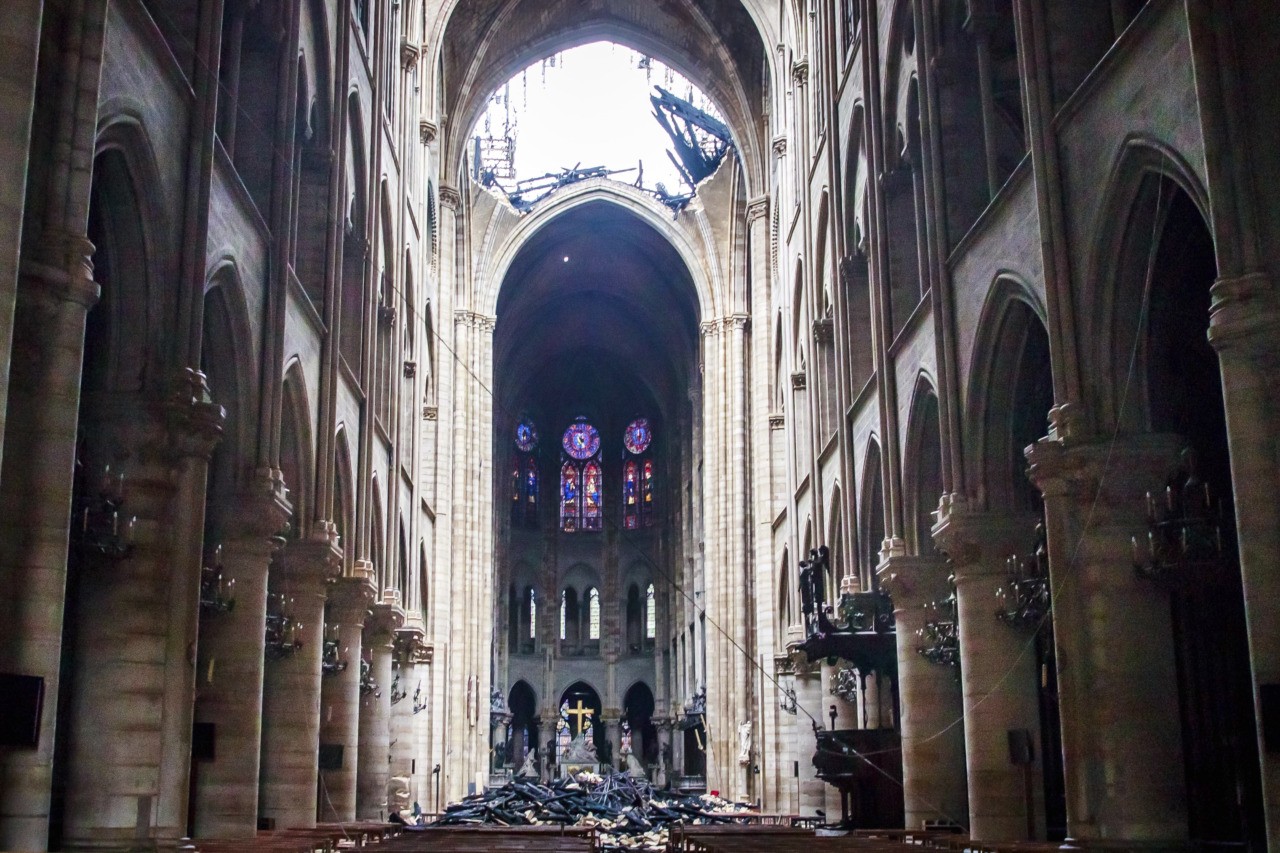
A hole is seen in the dome inside the fire-damaged Notre Dame cathedral in Paris, Tuesday, April 16, 2019. (Christophe Petit Tesson, Pool via AP)
Even The New York Times, which rarely misses a chance to slag the Judeo-Christian tradition, gave space to its architecture critic, Michael Kimmelman, who paid tribute to Notre-Dame in a piece headlined, “A France in Turmoil Weeps for a Symbol of Paris’s Enduring Identity.”
Interestingly, amidst his overall tribute to the history of the building, Kimmelman added a note sure to resonate with Americans: “Notre-Dame has occupied the heart of Paris for the better part of a millennium, its twin medieval towers rising from the small central island.” [emphasis added]
We might pause over those words, “twin…towers,” because, of course, they make us think of the World Trade Center, destroyed on September 11, 2001. (Or, as Rep. Ilhan Omar would say, that day when “some people did something.”)
It’s interesting to recall that prior to their destruction, the Manhattan twin towers were not highly regarded as architecture; published observers scorned them as “banal monoliths,” as an “arrogant intrusion,” or even as a “colossally unaligned tuning fork.”
Needless to say, such derision disappeared after 9/11. The death of nearly 3,000 people consecrated the memory of the buildings. As we ancient Romans used to say, De mortuis nil nisi bonum—never speak ill of the dead. Nor, we might add, should we speak ill of their tomb.
In fact, after any sort of loss, it’s usually the case that there’s an upward revision in the assessment of what’s been lost. That is, after something is gone, people miss it.
That’s what happened, for instance, at the end of the 19th century, when America’s western frontier came to be regarded as “closed.” Back then, most folks might not have thought much about the great expansion—until it stopped.
Yet in response to that sense of psychic loss, American culture moved to fill the void. And so it was that in 1905, the re-elected 26th president, Theodore Roosevelt, turned his inauguration into a celebration of frontier culture; as one historian recalled of the inaugural parade:
It had a decidedly Western flavor, featuring a delegation of “Teddy’s Rough Riders”; a contingent of American Indians, including the famous Geronimo; and a North Dakota float with figures representing such regional notables as Lewis and Clark, Sacagawea, George Armstrong Custer, Sitting Bull and Roosevelt himself. Toward the end of the parade came the Cowboy Brigade . . . Mounted on their spirited ponies, the cowboys were decked out in high style—wide-brimmed, high-domed sombreros, colorful neckerchiefs, chaps, heeled boots and prominently displayed six-shooters.
Once again, we tend to revere what’s been lost—but only after it’s been lost.
So now, returning to Notre-Dame, it’s likely that the conflagration will lead to a new reverence for historic Christian culture.
And yet it’s a cinch that this newly revived reverence will collide with the determined irreverence of PC.
Indeed, as we consider the possible impact of PC on the Notre-Dame rebuilding process, we can start with the head of the Catholic Church, Pope Francis, who worries most about climate change and immigration. As an exasperated conservative Catholic cleric, Cardinal Robert Sarah, sighed recently, under Francis, the church is at risk of becoming just another liberal NGO. So the mind reels at the possibility of rebuilding Notre-Dame in light of such progressive, and aggressive, ideology.
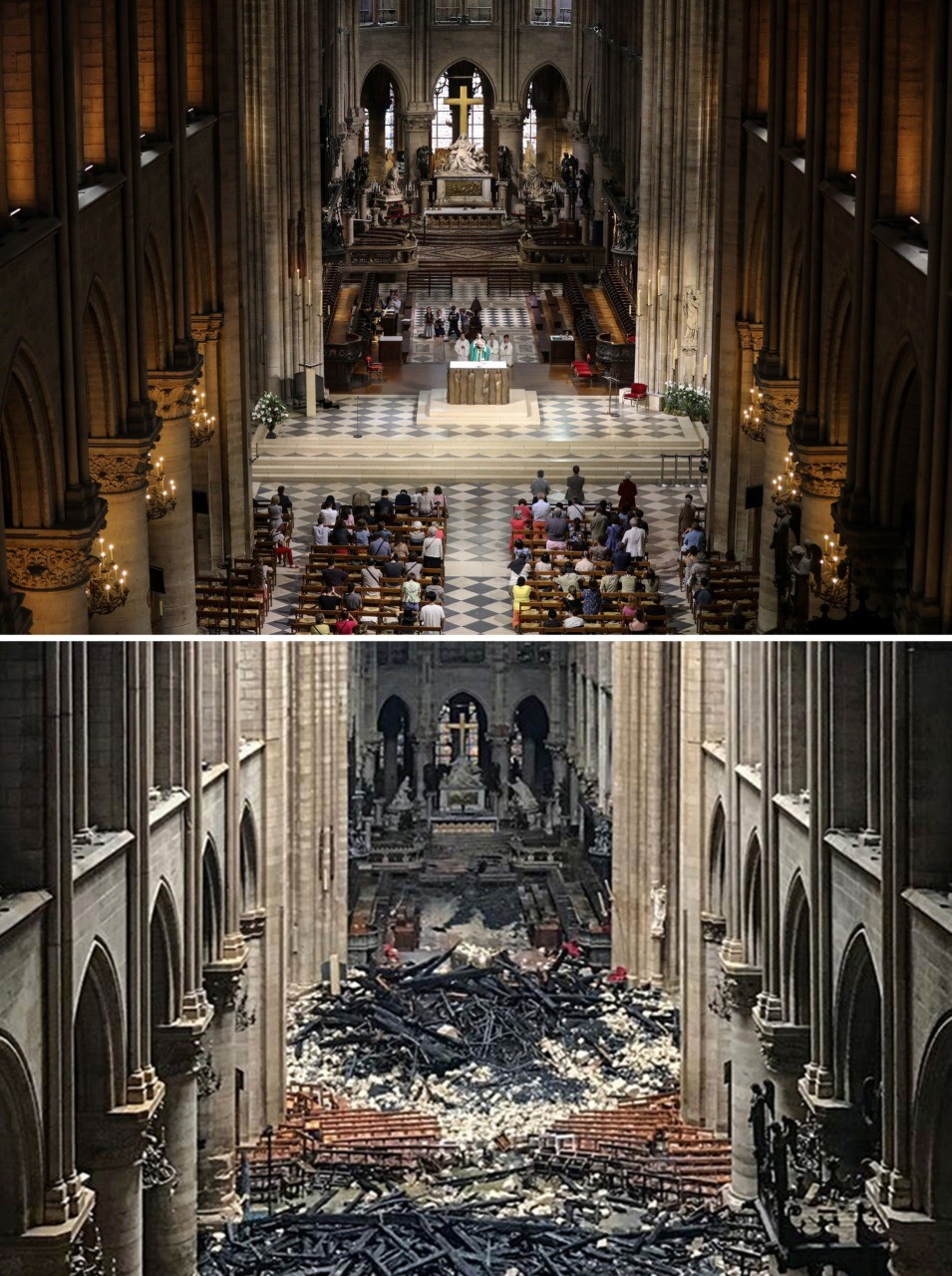
This before-and-after photo set shows people attending a mass at the Notre-Dame cathedral on June 26, 2018 (Top) and the same view of the cathedral’s interior on April 16, 2019 (Bottom), one day after the fire. (LUDOVIC MARIN/AFP/Getty Images)
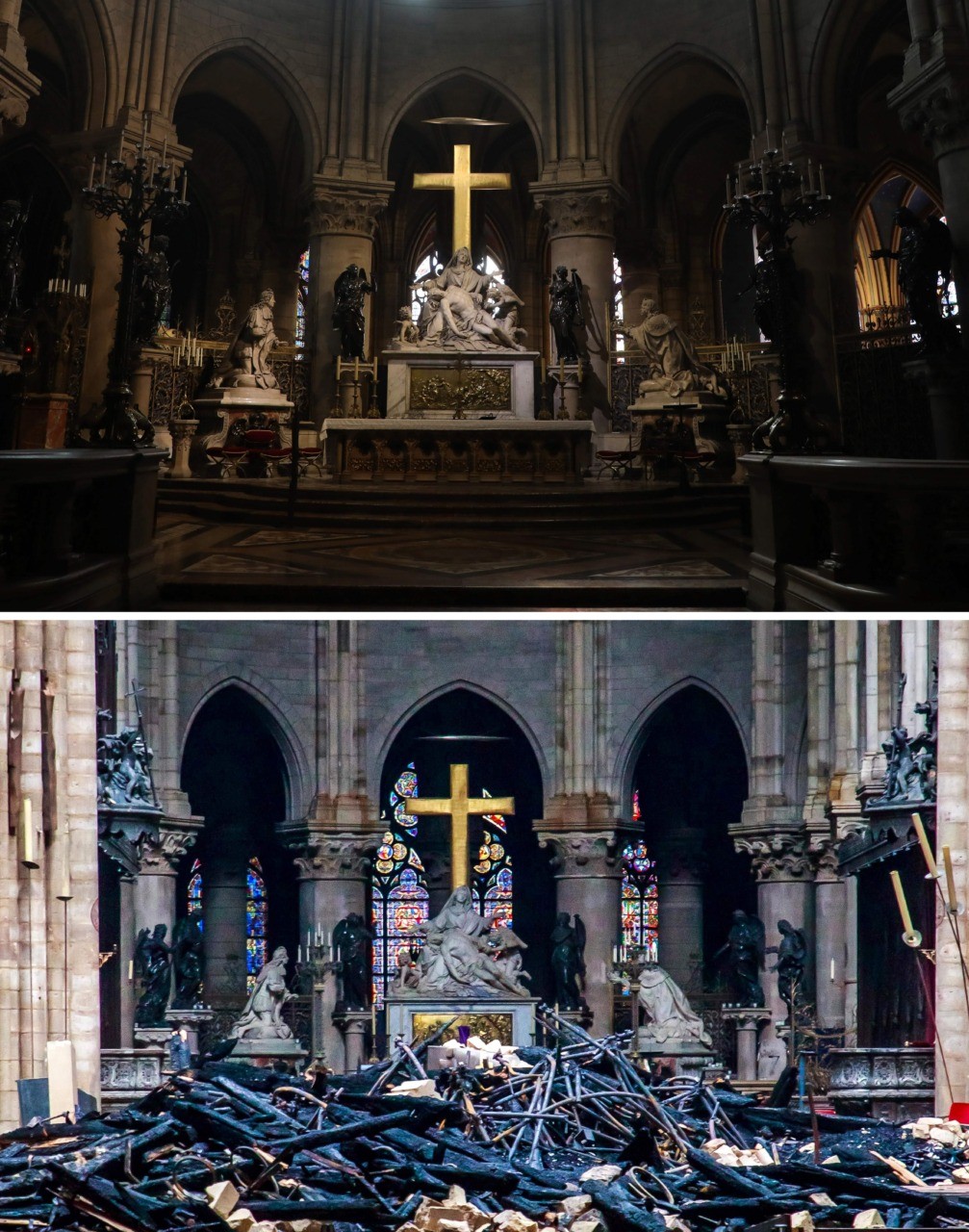
This before-and-after photo set shows the heart and transept at Notre-Dame cathedral on June 26, 2018 (Top) and the same view of the Notre-Dame Cathedral in Paris in the aftermath the fire on April 15, 2019 (Bottom). (LUDOVIC MARIN/AFP/Getty Images)
In the meantime, to get some clues as to what’s possible when PC reigns, we might consider what’s happening here in the U.S., as our historic culture is besieged by destroyers. As we shall see, it’s not just Confederate memorials anymore.
For instance, just on April 16, The Chicago Sun-Times reported that the nearby suburb of Oak Park was removing a school mural, dating back to the 1930s, of children at play. Why? Because all the children are white. That was undoubtedly the way the children of Oak Park looked back then, but to today’s PC warriors, the mere memory, no matter how accurate, is an outrage.
Thus the Sun-Times quoted one official: “We will be working with the Social Justice Club and our parent Diversity Committee to create a mural/canvas that better represents Julian Middle School.”
This action led one Oak Park resident, David Sokol, a retired professor of American art history, to label the removal, “a modern-day book burning.”
And the PC purge continues; just the day before, The New York Times reported on a San Francisco school where murals depicting the life of George Washington seem destined for exile, if not outright destruction.
Perhaps, after all the offending murals are removed, Americans will come to miss them, after all. Yet for the time being, the artistic equivalent of book-burning seems sure to continue.
So, yes, what just happened to Notre-Dame is deeply saddening. But Americans, sorrowful over the news from Paris, should remember: The bell tolls, too, for them.
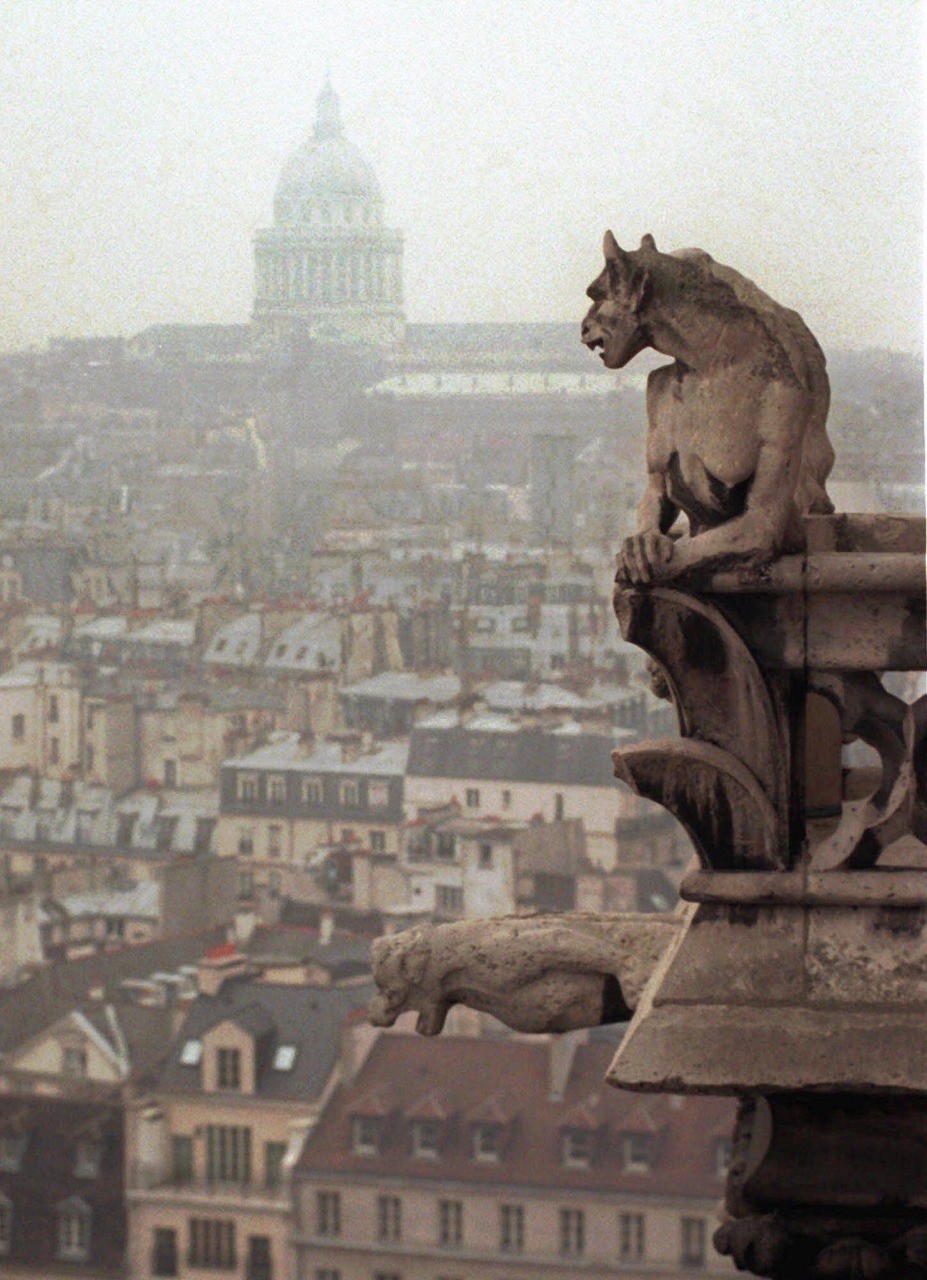
A chimera and a gargoyle watch over Paris from the top of the 11th century Notre Dame cathedral. Architect Viollet le Duc added the chimeras and gargoyles to the tower walls when repairing the damages caused by the French Revolution. The chimeras are purely decorative while the garoyles were built to serve as raingutters. (AP Photo/Remy De La Mauviniere)
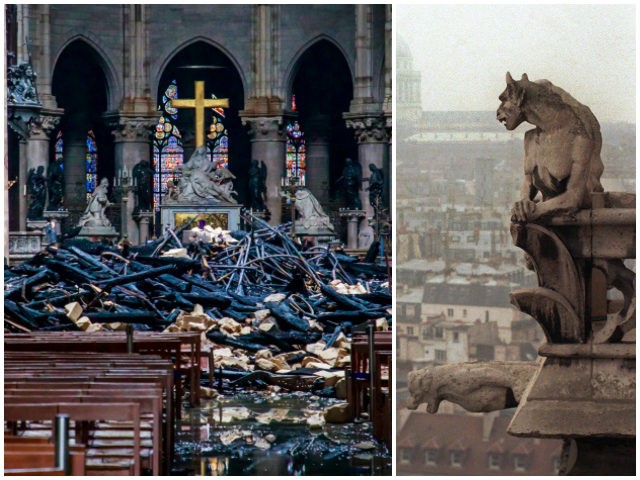
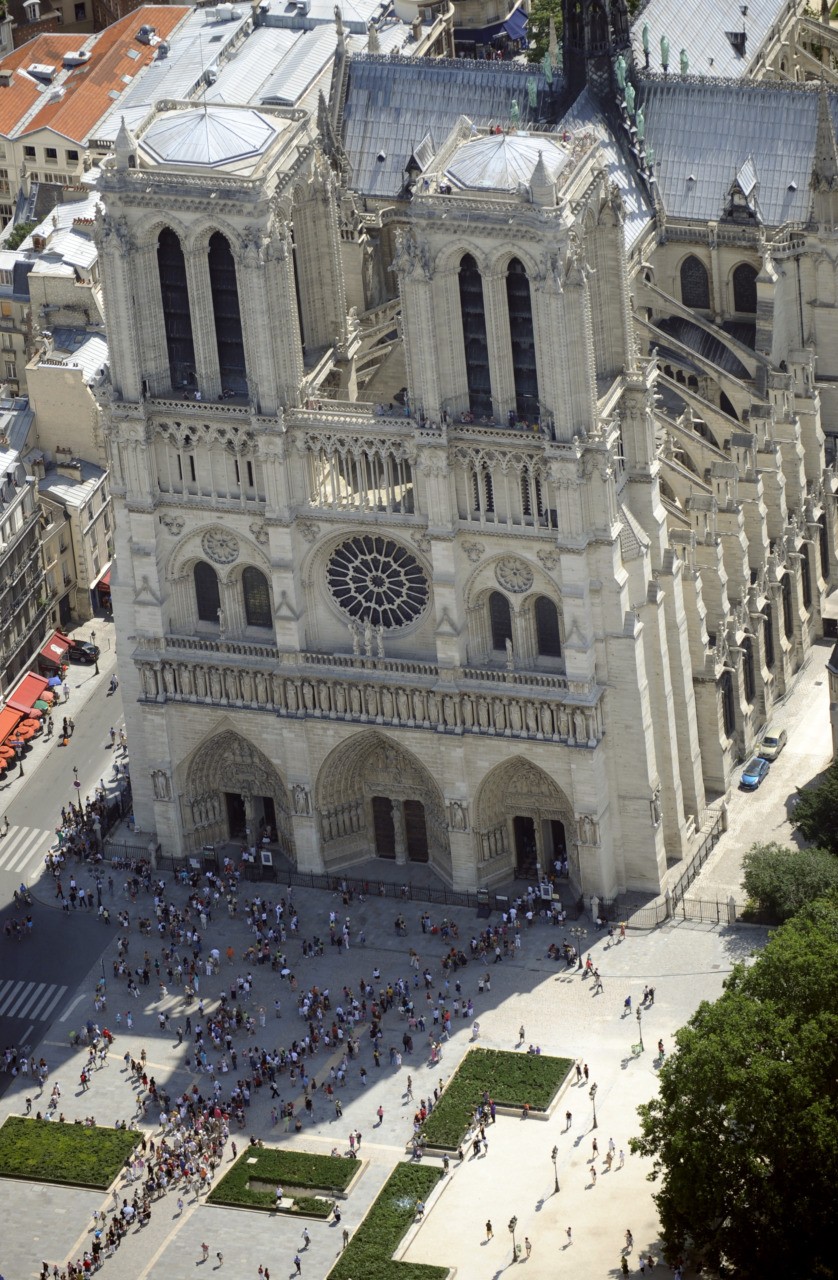
COMMENTS
Please let us know if you're having issues with commenting.